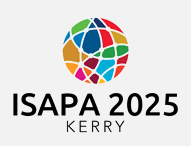Start Date
17-6-2025 9:00 AM
End Date
17-6-2025 10:30 AM
Abstract
Introduction This study continued previous research that defined disability simulations in undergraduate Introduction to Adapted Physical Education (APE) courses (Ross et al., 2023). This step investigated intended learning outcomes (ILOs) associated with APE instructors’ use of disability simulations, including why they used it and what they intended students to learn.
Methodology Six U.S. APE instructors completed surveys and semi-structured interviews describing the educational purposes and benefits of disability simulations. Using a Collaborative Qualitative Approach (Richard & Hemphill, 2018), key verbs were extracted from interviews and ILOs were drafted for each disability simulation type: Accessibility, Sports, Teaching, Activities of Daily Living, and Hybrid Activities (Ross et al., 2023). ILOs were aligned with three learning taxonomies: Bloom’s Taxonomy for cognitive (Newton et al., 2020), affective domains (Shepard et al., 2008), and Fink’s Taxonomy of Significant Learning (Fink, 2013). Action verbs used to construct ILOs spanned a wide range of learning taxonomy domains with overlap within and across disability simulation types.
Results Many action verbs reflected the Foundational Knowledge (Fink) or Understanding (Bloom’s Cognitive) domains, including, “understand,” “recognize,” and “notice.” Further action verbs commonly related to the Human/Caring Dimension (Fink) or Valuing/Internalizing Valuing (Bloom’s Affective) domains, including, “appreciate,” “gain perspective on”, and “empathize with.”
Conclusions Constructed ILOs reflect a focus on creating cognitive empathy and appreciation for disability among students through disability simulations. A critical appraisal of how these ILOs align with contemporary paradigms for preparing professionals to work with disabled individuals will be presented.
References Fink, L. D. 2013. Creating Significant Learning Outcomes: An Integrated Approach to Designing College Courses. Jossey-Bass.
Richards, K. A. R., & Hemphill, M. A. (2018). A practical guide to collaborative qualitative data analysis. Journal of Teaching in Physical Education, 37(2), 225–231. https://doi.org/10.1123/jtpe. 2017-0084
Ross, S.M., Fines, A., Brink, C., Simpson, A.C. & Matthews, H. (2023). Disability simulation design and implementation in adapted physical activity coursework - Reports from faculty. Quest. https://doi.org/10.1080/00336297.2023.2207216
Shephard, K. (2008). Higher education for sustainability: seeking affective learning outcomes. International journal of sustainability in Higher Education, 9(1), 87-98.
Recommended Citation
Simpson, Amelia C.; Ross-Cypcar, Samantha; Fines, Abby; and Zhang, Xiaoxia, "Alignment of Disability Simulations with Intended Learning Outcomes for Pre-service Physical Education Teachers" (2025). International Symposium of Adapted Physical Activity and International Symposium on Physical Activity and Visual Impairment and Deafblindness. 2.
https://sword.cit.ie/isapa/2025/day2/2
Alignment of Disability Simulations with Intended Learning Outcomes for Pre-service Physical Education Teachers
Introduction This study continued previous research that defined disability simulations in undergraduate Introduction to Adapted Physical Education (APE) courses (Ross et al., 2023). This step investigated intended learning outcomes (ILOs) associated with APE instructors’ use of disability simulations, including why they used it and what they intended students to learn.
Methodology Six U.S. APE instructors completed surveys and semi-structured interviews describing the educational purposes and benefits of disability simulations. Using a Collaborative Qualitative Approach (Richard & Hemphill, 2018), key verbs were extracted from interviews and ILOs were drafted for each disability simulation type: Accessibility, Sports, Teaching, Activities of Daily Living, and Hybrid Activities (Ross et al., 2023). ILOs were aligned with three learning taxonomies: Bloom’s Taxonomy for cognitive (Newton et al., 2020), affective domains (Shepard et al., 2008), and Fink’s Taxonomy of Significant Learning (Fink, 2013). Action verbs used to construct ILOs spanned a wide range of learning taxonomy domains with overlap within and across disability simulation types.
Results Many action verbs reflected the Foundational Knowledge (Fink) or Understanding (Bloom’s Cognitive) domains, including, “understand,” “recognize,” and “notice.” Further action verbs commonly related to the Human/Caring Dimension (Fink) or Valuing/Internalizing Valuing (Bloom’s Affective) domains, including, “appreciate,” “gain perspective on”, and “empathize with.”
Conclusions Constructed ILOs reflect a focus on creating cognitive empathy and appreciation for disability among students through disability simulations. A critical appraisal of how these ILOs align with contemporary paradigms for preparing professionals to work with disabled individuals will be presented.
References Fink, L. D. 2013. Creating Significant Learning Outcomes: An Integrated Approach to Designing College Courses. Jossey-Bass.
Richards, K. A. R., & Hemphill, M. A. (2018). A practical guide to collaborative qualitative data analysis. Journal of Teaching in Physical Education, 37(2), 225–231. https://doi.org/10.1123/jtpe. 2017-0084
Ross, S.M., Fines, A., Brink, C., Simpson, A.C. & Matthews, H. (2023). Disability simulation design and implementation in adapted physical activity coursework - Reports from faculty. Quest. https://doi.org/10.1080/00336297.2023.2207216
Shephard, K. (2008). Higher education for sustainability: seeking affective learning outcomes. International journal of sustainability in Higher Education, 9(1), 87-98.


